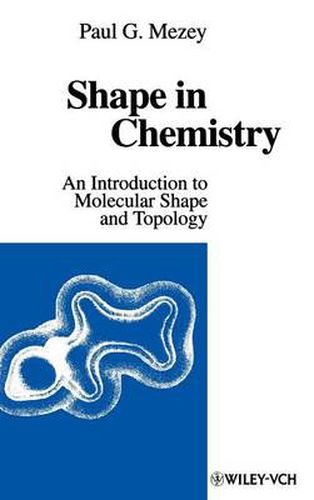Readings Newsletter
Become a Readings Member to make your shopping experience even easier.
Sign in or sign up for free!
You’re not far away from qualifying for FREE standard shipping within Australia
You’ve qualified for FREE standard shipping within Australia
The cart is loading…






‘Shape in Chemistry’ looks at molecular shape from a unique perspective: It introduces the reader to the topological concepts and methods of precise shape characterization that are applicable for direct, non-visual description and analysis of general molecular shapes. The author provides a pictorial introduction to all the topological tools necessary for the subjects discussed. Mathematical description is also provided at an easily comprehensible level. New concepts are introduced beginning at the familiar level of stereochemistry and lead on to more advanced topological shape analysis methods. The structure of the book reflects the author’s desire to bring the reader to an early appreciation of the power of topology in chemistry. After a brief review of the quantum chemical concept, the author compares the merits of visual, computer graphics methods and nonvisual, algorithmic shape analysis methods. The book ends with the concepts of approximate symmetry and various generalizations of symmetry. ‘Shape in Chemistry’ is surely destined to become standard reading in the field. It presents a valuable addition to the literature on shape and modeling of molecules for non-specialists organic, physical and medical chemists, researchers in various aspects of QSAR and pharmacological drug design and advanced undergraduate and graduate students.
$9.00 standard shipping within Australia
FREE standard shipping within Australia for orders over $100.00
Express & International shipping calculated at checkout
‘Shape in Chemistry’ looks at molecular shape from a unique perspective: It introduces the reader to the topological concepts and methods of precise shape characterization that are applicable for direct, non-visual description and analysis of general molecular shapes. The author provides a pictorial introduction to all the topological tools necessary for the subjects discussed. Mathematical description is also provided at an easily comprehensible level. New concepts are introduced beginning at the familiar level of stereochemistry and lead on to more advanced topological shape analysis methods. The structure of the book reflects the author’s desire to bring the reader to an early appreciation of the power of topology in chemistry. After a brief review of the quantum chemical concept, the author compares the merits of visual, computer graphics methods and nonvisual, algorithmic shape analysis methods. The book ends with the concepts of approximate symmetry and various generalizations of symmetry. ‘Shape in Chemistry’ is surely destined to become standard reading in the field. It presents a valuable addition to the literature on shape and modeling of molecules for non-specialists organic, physical and medical chemists, researchers in various aspects of QSAR and pharmacological drug design and advanced undergraduate and graduate students.